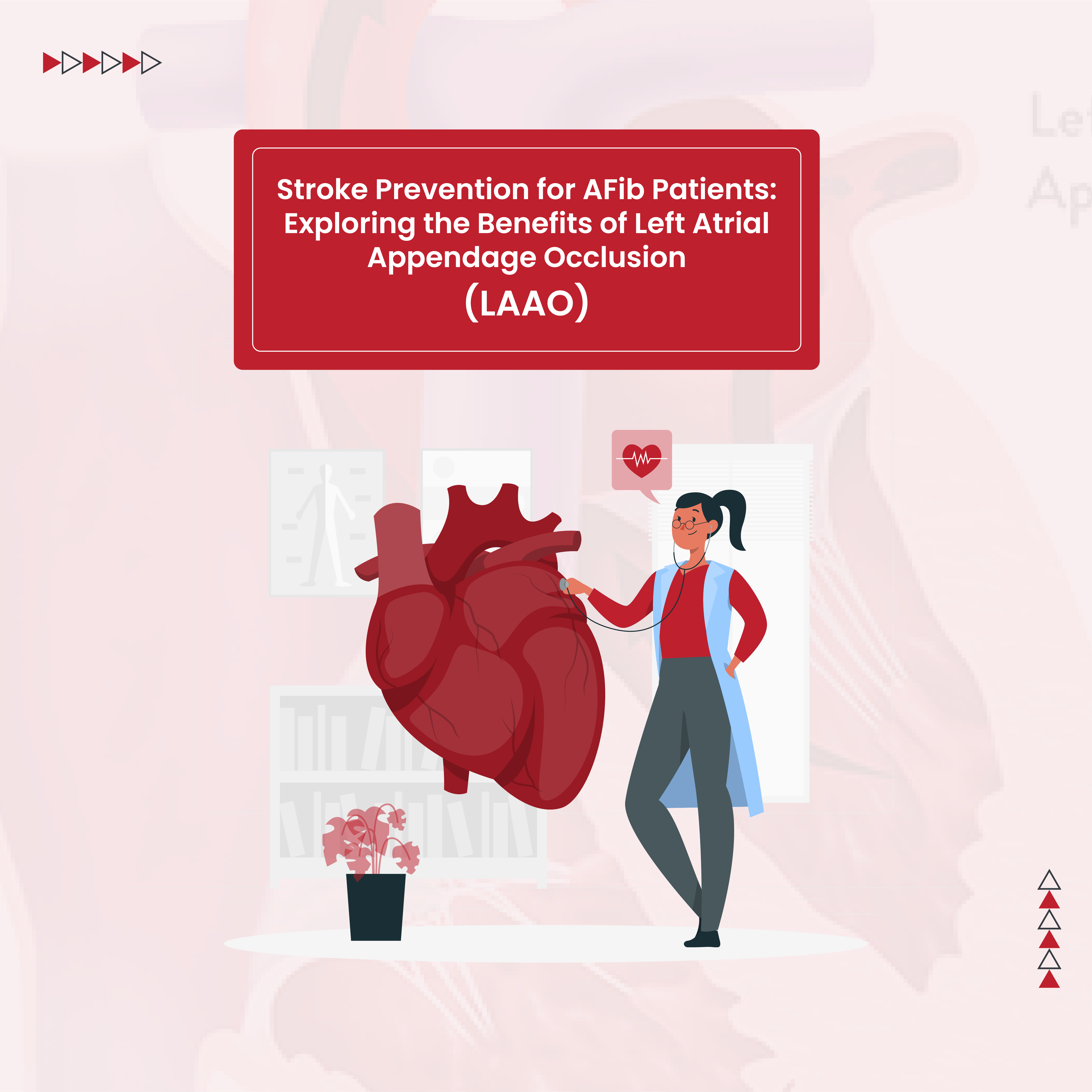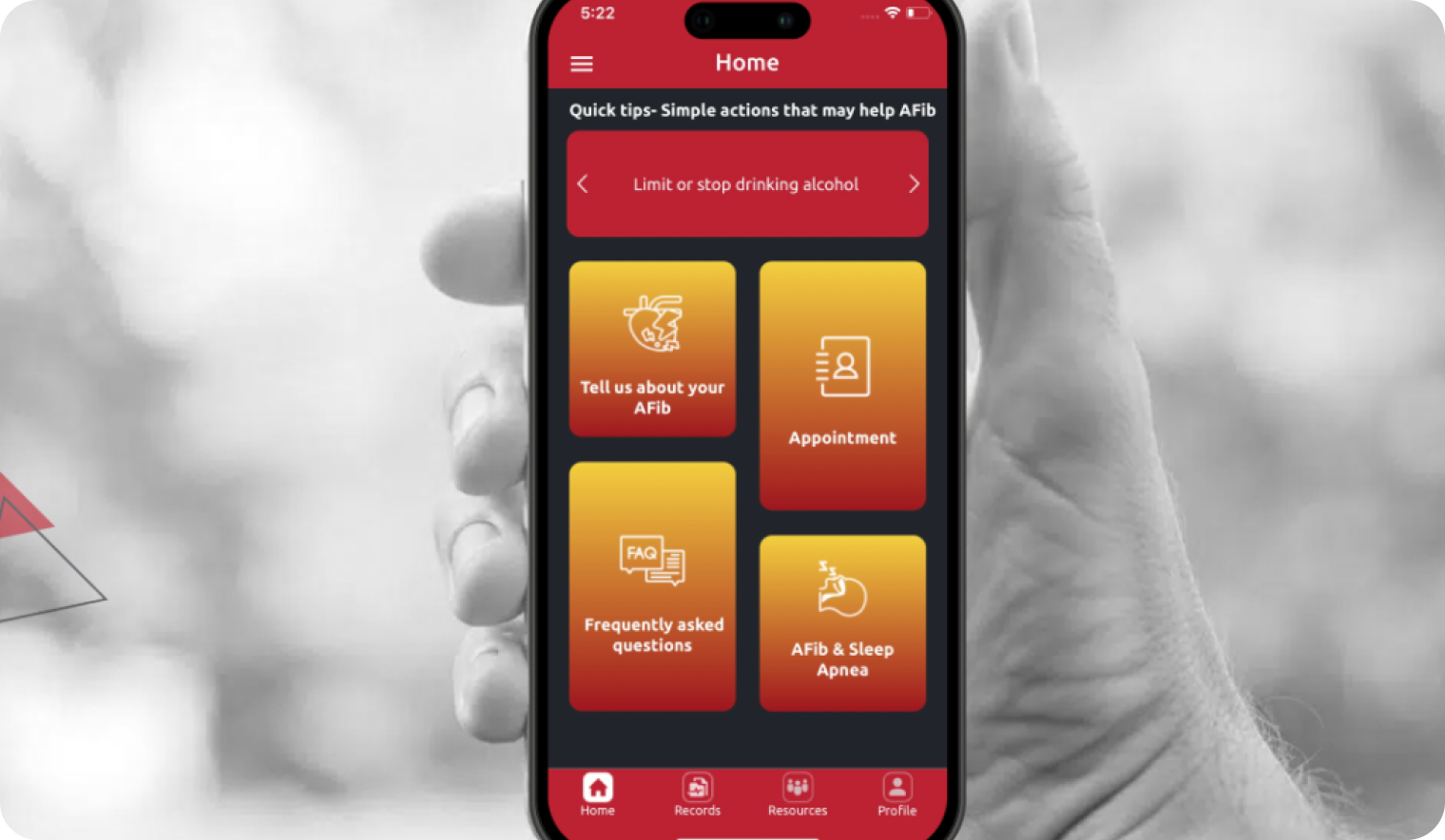
Stroke Prevention for AFib Patients: Exploring the Benefits of Left Atrial Appendage Occlusion (LAAO)
People with atrial fibrillation (AFib) have a 5x increased
Learn more about what AFib is, why treatment can save lives, and what you can do next.

Greater risk of stroke for atrial fibrillation patients
In the US, the prevalence of atrial fibrillation is estimated at 10.5 million people, and is predicted to double by 2035.
Age-adjusted AFib incidence is predicted to grow as a result of increased instances of risk factors amongst the population including:
People in the US are affected by atrial fibrillation
Atrial fibrillation affects 4.8% of the adult population in the United States.
AFib is characterized as haphazard, unsynchronized, irregular, rapid heart rate and rhythm. Consequences of the arrhythmia are negative symptoms that affect quality of life and in some instances stroke.
Atrial fibrillation is divided into four general types
Paroxysmal, Persistent, Long Standing Persistent and Permanent. The main difference between the four types of AFib is the duration of the episode. In general, the longer AFib is sustained, the more likely it is that symptoms will occur.
32%
38%
30%
A person can help reduce their chances of developing AFib. For example, quitting smoking, limiting alcohol consumption, maintaining a healthy weight and engaging in a heart healthy lifestyle all decrease the onset of Afib.
Connecting with an electrophysiologist who works together with patients to choose the best treatment options, based on the patient’s values and preferences is the optimum therapy for AFib.
The first step in therapy for AFib is to determine the patient’s values and goals for their health, assess the impact of AFib on their activities of daily living and lastly assess their risk for stroke. Lifestyle modifications and addressing other contributing factors like sleep apnea are the first treatment options followed by medications, procedures and surgeries.
Lifestyle
Modifications &
Shared Decision Making
Pharmacological Management
Arrhythmia Procedures
Catheter Ablations, Radiofrequency, Laser & Cryo Ablations, Pulmonary Vein Isolation
Hybrid or Minimally Invasive Epicardial Ablation
Left Atrial Appendage Therapy or Cardiac Stroke Prevention
Stay ahead with the latest healthcare insights and trends. Dive into our blog for expert advice and informative articles. Get informed and make empowered decisions for a healthier life!

People with atrial fibrillation (AFib) have a 5x increased

We are thrilled to announce the official launch of

Does Turmeric Help Atrial Fibrillation? Turmeric is a perennial
Discover inspiring journeys of recovery and triumph over health challenges. Our success stories highlight the resilience and determination of our patients. Read on to find hope and motivation for your own path to wellness.
"As a whole, patients' pre-procedure scores improve by over 30 points after an ablation with the Fix AFib Clinic."
"Two weeks after my heart surgery, I am back to work, directing my son in the garden, and feeling better than I have in nearly three years! Thank you."
"I would like to sincerely thank Dr. Laws for saving my life. The appreciation that I have for you is immeasurable."
"To Dr. Laws and the whole team, with gratitude for your care and kindness."
"Survey results show Fix AFib patients have a 'significant, meaningful difference in their quality of life' after an ablation procedure."
Tell us your concerns, or review your wearable rhythm strip results with one of our specialists